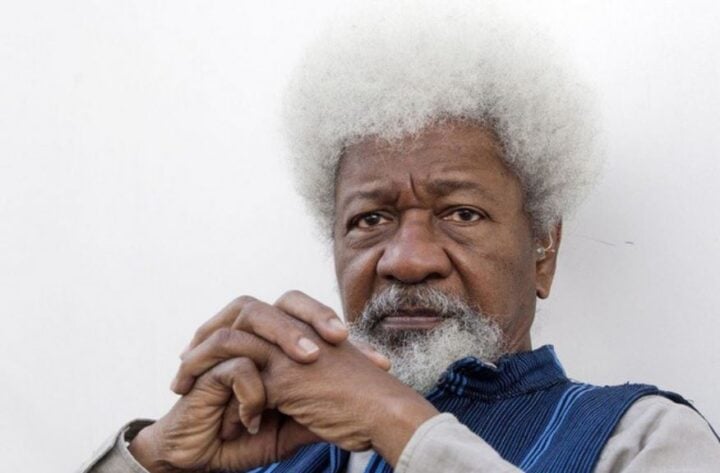Jane Austen Wrecked My Life: Laura Piani Interview | WSIU
Table of Contents
In a world dominated by streaming services and corporate media giants, the return of 91.9 FM to full power is more then just a technical fix; it’s a beacon of hope for community-driven broadcasting. But what does this mean for the future of local radio in an increasingly digital landscape?
Local radio stations like 91.9 FM serve as vital community hubs, providing a platform for local voices, news, and music that frequently enough goes unheard in mainstream media. They offer a unique connection to the community, fostering a sense of belonging and civic engagement.
The Economic Impact of Local Radio
Did you know that local radio advertising can be considerably more cost-effective for small businesses than national campaigns? According to a study by the radio Advertising Bureau (RAB), local radio ads can generate a return on investment of up to $12 for every dollar spent. this makes local radio a crucial lifeline for small businesses looking to reach their target audience.
Community radio stations frequently enough operate on shoestring budgets, relying on volunteer staff and community donations. The return of 91.9 FM to full power likely involved notable effort and dedication from local volunteers.
While the return of 91.9 FM is a positive sign, local radio stations face numerous challenges, including competition from online streaming services, declining advertising revenue, and the need to adapt to changing listener habits.
Adapting to the Digital Age
To thrive in the digital age, local radio stations need to embrace new technologies and strategies. This includes streaming their content online, creating podcasts, and engaging with listeners on social media. By expanding their reach beyond the traditional airwaves, local radio stations can attract new audiences and remain relevant in an increasingly digital world.
“Local radio stations shoudl focus on creating unique, hyper-local content that cannot be found anywhere else,” says Sarah Miller, a media consultant specializing in community broadcasting. “This could include interviews with local leaders, coverage of community events, and showcasing local musicians.”
Writer-director Laura piani’s debut film,”Jane austen Wrecked,” is generating buzz. But in the fiercely competitive world of independent cinema, what does it take for a film like this to find its audience and achieve success?
Independent filmmakers often face an uphill battle against big-budget Hollywood productions. They must rely on creativity, resourcefulness, and a strong network of support to bring their visions to life.
Funding Challenges and Creative Solutions
Securing funding is one of the biggest challenges for indie filmmakers. Many rely on crowdfunding, grants, and private investors to finance their projects. Some filmmakers have even turned to innovative solutions like NFT sales to raise capital.
Even a grate film can languish in obscurity if it doesn’t have effective distribution and marketing. Indie filmmakers need to be proactive in promoting their work and finding creative ways to reach their target audience.
The power of Film Festivals
Film festivals like Sundance, Tribeca, and South by Southwest (SXSW) can provide a crucial platform for indie films to gain exposure and attract distribution deals. A successful festival run can significantly boost a film’s profile and increase its chances of finding a wider audience.
Social media and online platforms like YouTube and Vimeo offer indie filmmakers powerful tools for reaching audiences directly. By creating engaging content and building a strong online presence, filmmakers can bypass traditional gatekeepers and connect with viewers around the world.
Many successful indie films have been discovered through online platforms. For example, the horror film “Skinamarink” gained viral attention on TikTok before becoming a box office success.
The future of indie film is both exciting and uncertain. While the rise of streaming services has created new opportunities for distribution, it has also increased competition for viewers’ attention.
the Importance of Diversity and Representation
Audiences are increasingly demanding diverse and representative stories. Indie filmmakers have a unique chance to fill this void by creating films that reflect the experiences of marginalized communities and challenge traditional narratives.
The Role of Arts Funding and support
Government funding and private support play a crucial role in sustaining the indie film industry. By investing in independent filmmakers, we can ensure that diverse voices and perspectives continue to be heard.
The resurgence of 91.9 FM and the buzz around “Jane Austen Wrecked” highlight the importance of local media and independent art. By supporting these endeavors, we can foster vibrant communities and ensure that diverse voices continue to be heard.
In today’s media landscape, local initiatives and autonomous art forms are carving out crucial spaces. Time.news spoke with industry experts to explore the resurgence of community radio and the path to success for indie films.
Local radio is experiencing a renaissance.With 91.9 FM back in action,we wanted to delve into what’s next for community broadcasting. We spoke with Arthur Finch, a seasoned media consultant specializing in local radio and community engagement.
Time.news: Arthur, the return of 91.9 FM signifies a win for local radio. What do you see as the enduring power of community broadcasting in a world dominated by streaming?
Arthur Finch: The power lies in its hyper-local focus, plain and simple. Streaming services offer a broad selection, but local radio provides something unique: a direct connection to your community. It’s the voice of your neighbors, the stories about your town, and the music that reflects your local culture. That connection fosters a sense of belonging that Spotify simply can’t replicate.
Time.news: The article mentions the economic impact of local radio for small businesses. How important is it really for them against the large ad campaigns of bigger retailers?
Arthur Finch: It’s incredibly important. The Radio Advertising Bureau (RAB) study showing a potential $12 return for every dollar spent is compelling.Local radio offers cost-effective,targeted advertising. Small businesses can reach their key demographic within their geographical area far more efficiently than with a national campaign.It’s about precision versus saturation, in many cases.
Time.news: What are the biggest challenges facing local radio stations today, and what strategies can they employ to overcome them?
Arthur Finch: The challenges are threefold: competition from streaming, declining ad revenue, and adapting to changing listener habits. To overcome these,stations need to embrace digital strategies. This means streaming their content online, creating engaging podcasts targeted at the community, and actively using social media to connect with listeners. They need to become multi-platform hubs for local content to improve the reach of radio advertising and grow their target audience.
Time.news: The Expert Tip in the article suggests focusing on “hyper-local content.” Can you elaborate on why that’s so crucial?
Arthur Finch: Absolutely. It’s about offering something that no one else can. Think exclusive interviews with local politicians, live coverage of high school sports, in-depth reports on community events, and showcasing emerging local musicians. This kind of content builds loyalty and makes the station an indispensable part of community life.
Turning our attention to the world of independent cinema, Laura Piani’s “Jane Austen Wrecked” is generating significant buzz. What are the key elements needed for indie film success?
Time.news: Funding seems to present a major stumbling block for independent filmmakers. What creative solutions are available beyond traditional investment?
Time.news: Can you speak to the increasing importance of film festivals for indie films?
Time.news: The article mentions “Skinamarink” gaining viral attention on TikTok. How critically important is leveraging social media for indie filmmakers these days?
Time.news: Diversifying content that reflects the experience of more communities is very important to your publication- Can you elaborate?











